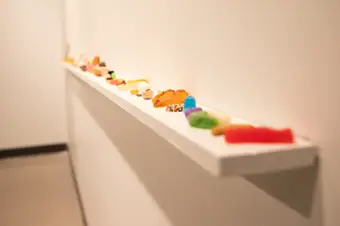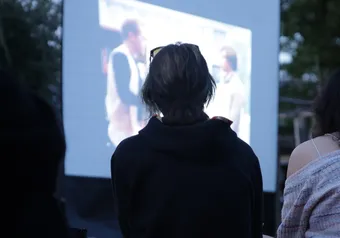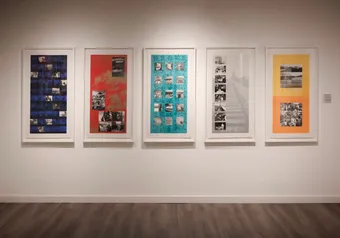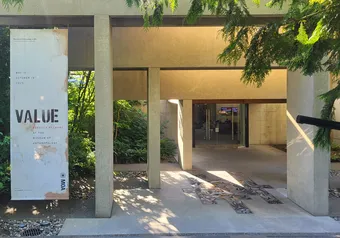I do not have 100 questions about the Hatch’s 100s Day. I mostly have like, four.
What am I talking about? The Hatch Gallery’s latest exhibition, 100s Day, is, of course, referring to the North American elementary school event wherein you, a child, bring in 100 objects to better visualize what 100 actually looks like. This must
not have been a thing we did in my North American elementary school, because I still can’t visualize 100.
The Hatch’s 100s Day contains nine collections of a hundred, each by a different artist. So: 900 things. Each hundred is loosely organized around a theme, which varies from childhood treasures to grocery store bulk bin items to fonts to Grindr profiles.
You heard that right. The art in this exhibit is — well, put crudely — junk. Literal (mostly) pre-made objects with a non-art function that the artists have picked up
or had previously owned, just arranged in a gallery setting. If you don’t like art, you might call that junk. Historically, it’s called “found object art” and it’s been around for a damn long time.
Most famous of found object art is Marcel Duchamp’s concept of “readymades,” which I think is best summed up by his work “Fountain” that is just a urinal with some sharpie on it.
100s Day contains a variety of items. Pokémon cards, dried green beans, a backpack, connect- the-dots papers, dried peaches, a lockbox, a book of fairytales — the list goes on.
There are some pieces, however, that step out of the box in terms of what 100 “objects” they contain. There are appliqués embroidered together. There are Grindr profiles written in white ink on squares of black construction paper, which look terribly impressive and ominous. There is even a collection of 100 recorded sounds, which is so conceptually interesting and would be so much more captivating if it wasn’t played over the speakers to the entire gallery.
The issues that the Hatch’s 100s Day struggle with are challenges that often come up with found object art in general.
How much narrative construction must there be for someone else to understand the importance of random items? Can’t you just put together items and the viewer can construct a story how they want from those?
Alas, hell no.
If found object art was really only about random found objects, it wouldn’t take up as much a place in art history as it does. A hundred objects found on the ground might be interesting, depending on who did it. We care about found objects only insomuch as they tell us about the eye that found them or the place that they were found or the people that might have left them there.
100s Day works in a classroom setting because it’s participatory. You bring in a hundred things and learn about how much space the things you love can take up. Moving that concept into a gallery setting could be super interesting! It could give us an in-depth look into the choosing process of other people, into their priorities and how they make decisions.
That just isn’t quite there in the Hatch’s 100s Day.
Firstly, there aren’t any artist bios. The informational pamphlet, or gallery text, is a “play” arranged from a transcript of a conversation by two of the Hatch’s curators who are discussing the meter. Like, the measurement. While that play
was delightful and fun to read, it didn’t tell me anything about the individual pieces in the exhibit or how the artists were chosen or how the artists chose their items. The art in 100s Day is 100 per cent up for our own interpretation.
For an exhibition talking about the dissonance of connecting concepts with reality, it sure is failing to connect that concept to the reality of its art.
Which brings us — me – back to the question at hand. A hundred — or four — questions about 100s Day.
1. Why those 100 items?
2. How was the experience of picking each item?
3. What was it supposed to teach you?
4. What was it supposed to teach us?
Those are my questions. Add your own. Maybe we’ll make it to 100.
100s Day will be at the Hatch until February 14.
First online
Share this article








